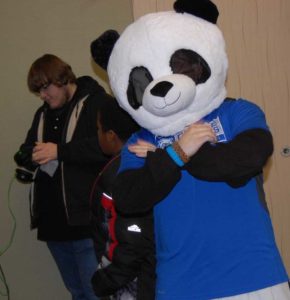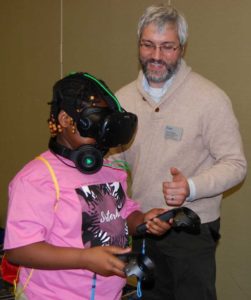 What is randomness? We all have some preconceived notion for what it means, but how does one describe it mathematically? The purpose of this J-Term (The Many Faces of Randomness) was to look at a few uses for concept of randomness, and determining what, if anything unifies them. We started out by analyzing card games, dice rolls, and coin flips. We then moved on to discussing some of the common perceptions and fallacies regarding randomness. These fallacies usually arise when people attempt to find patterns in random sequences. They range from the semi-rational “hot hand fallacy” (when a player of a particular sport seemingly increases their odds for making a shot based on their previous shots that game), to the almost entirely irrational “gamblers fallacy” (when a person is playing a game of chance and determines that, due to previous failures, they are due for a win). After touching on these topics, we moved deeper into the mathematics behind randomness. We discussed many concepts including entropy, determinism, random number generators, Kolmogorov complexity, and much more. So, I think it is safe to say that we didn’t spend the entire time drawing cards and flipping coins.
What is randomness? We all have some preconceived notion for what it means, but how does one describe it mathematically? The purpose of this J-Term (The Many Faces of Randomness) was to look at a few uses for concept of randomness, and determining what, if anything unifies them. We started out by analyzing card games, dice rolls, and coin flips. We then moved on to discussing some of the common perceptions and fallacies regarding randomness. These fallacies usually arise when people attempt to find patterns in random sequences. They range from the semi-rational “hot hand fallacy” (when a player of a particular sport seemingly increases their odds for making a shot based on their previous shots that game), to the almost entirely irrational “gamblers fallacy” (when a person is playing a game of chance and determines that, due to previous failures, they are due for a win). After touching on these topics, we moved deeper into the mathematics behind randomness. We discussed many concepts including entropy, determinism, random number generators, Kolmogorov complexity, and much more. So, I think it is safe to say that we didn’t spend the entire time drawing cards and flipping coins.

IMMAW
After spending our J-Term studying randomness, we were invited to create an exhibit for the I Make Me a World in Iowa Education Day STEM Festival. Over 1,000 middle school and high school students from across Iowa came to learn about African American culture and to explore higher education. Our class came up with four different stations for the students to interact with.
Station 1
The first station was focused on the perception of randomness. We laid out eight pieces of paper. Four of them displayed randomly generated binary strings, and the other four displayed patterned binary strings. On the back of each sheet was a statement either saying that the string was random or describing the pattern that the string held. The students task was to try to pick the random strings. This helped convey the idea that a random string may appear to have a pattern, and a patterned string may appear to be random.
Station 2
Our second station was focused on probability and randomness. We created a plinko board with twelve rows of nails and thirteen possible outcomes. In theory, the board would display a normal distribution due to the probabilities involved. All we had the students do was drop a penny into the plinko board and watch to see where it landed. It sounds simple, but the students had a great time trying to see if they could get a penny to land in a lower probability slot. By the end of the day, we had what looked to be a relatively normal distribution of pennies.
Station 3
At our third station, we let the students attempt to generate randomness. The idea was to give the students thirteen cards, all in order from Ace to King, and let them shuffle the cards until they believed they were randomly distributed. We had a computer set up that calculated how random the string the students had generated was, so they got to see firsthand how good they were at generating randomness.
Station 4
Our fourth and final station was about interacting with randomness. This station was our most popular station by far because it involved Virtual Reality. The game we created was based off of a famous way to generate a random sequence called a random walk. The basic idea is that an object in a 3D plane has six different directions it can go, and it has equal probability of going in each direction. The game involved an object moving through a 3D plane with that property, and it was the students job to shoot the object with the virtual bow and arrow. By letting the students interact with randomness through Virtual Reality, they got to learn and play at the same time.

Overall, the students that visited our stations were extremely interested in what we had to offer, and they walked away with a greater understanding of randomness.
My Takeaway
I am honored to have been able to not only attend the festival, but to have run a station at our exhibit. Watching the students come to our exhibit and learn about randomness through different games was wonderful. Even better was when they asked questions. Helping educate and inspire students that were intellectually curious about mathematics and randomness made the whole event worth it for me.
Written by: Connor Ellingson